Shenwick Recruitment Limited specialises in recruitment solutions across the sectors of Demand Planning and Supply Chain

Shenwick Recruitment Limited specialises in recruitment solutions across the sectors of Demand Planning and Supply Chain

Is It All About Systems?
|
In the Supply Chain world we hear a lot about S&OP, forecasting methodology, algorithms, big data and so on...........now don't get me wrong, I have used some very effective Demand Planning packages and having a forecasting tool that can be utilised effectively by Demand and Supply Planners alike is vital in terms of providing the required visibility of expected demand and seasonality factors that can be used by the planners. But do we sometimes get too obsessed by what systems are giving to us? Isn't it more about WHAT WE PUT INTO THE SYSTEM? In my experience, forecasting processes fall down due to a distinct lack of communication between key supply chain stakeholders. Too often, high forecast variance is blamed on;
And on occasions these maybe contributing factors to high forecast variance and even worse, service failures. They may also impact the 'bottom line' in terms of excessive stockholding. But in my experience it is the lack of communication between key departments that sees forecasting processes not used effectively. This lack of communication could be;
And all of the above leads to lack of ownership in terms of Demand Planning/Supply Planning issues With the above issues in mind, a forecasting meeting between all key stakeholders should be held on a regular basis (weekly?). Think carefully about the agenda as the meeting should be short and sharp and not buried in tired old anecdotal issues. Representatives from each affected department should attend this meeting. (Demand Planning, Supply Planning, Production, Sales, Marketing, Finance, I.T support) AGENDA CONTENT? - Overall service level and forecast variance performance snapshots presented but quickly drilling down to problem products in terms of supply or out of life. - DON'T waste time on reviewing why a product variance has increased from 25% to 30% if supply will never be affected anyway ! And don't set your variance targets too low, planners could be continually wasting valuable time on amending forecasts and 'locking' the systems in trying to reduce variances on products that there are never issues with !! - Common understanding established of what has caused any supply issues or exceptionally high forecast variance issues, how they can be addressed either in supply method or forecasting method - Upcoming promotional/delist activity by external customer or internal sales teams. What are potential supplier or production capacity issues? - What other events could affect demand? - Any I.T issues? Do key data interfaces need to be amended? What system development ideas are there? Can a formal system change request be submitted?
These are just a few examples in terms of content and in my experience, sometimes the above never happens or a number of separate meetings are held between these stakeholders which inevitably DILUTES the whole Demand Planning process. (as well as wasting valuable time !) In conclusion, systems are important but REGULAR AND EFFECTIVE COMMUNICATION is the key requirement in ensuring that a business operates a robust Demand and Supply Planning process. |
